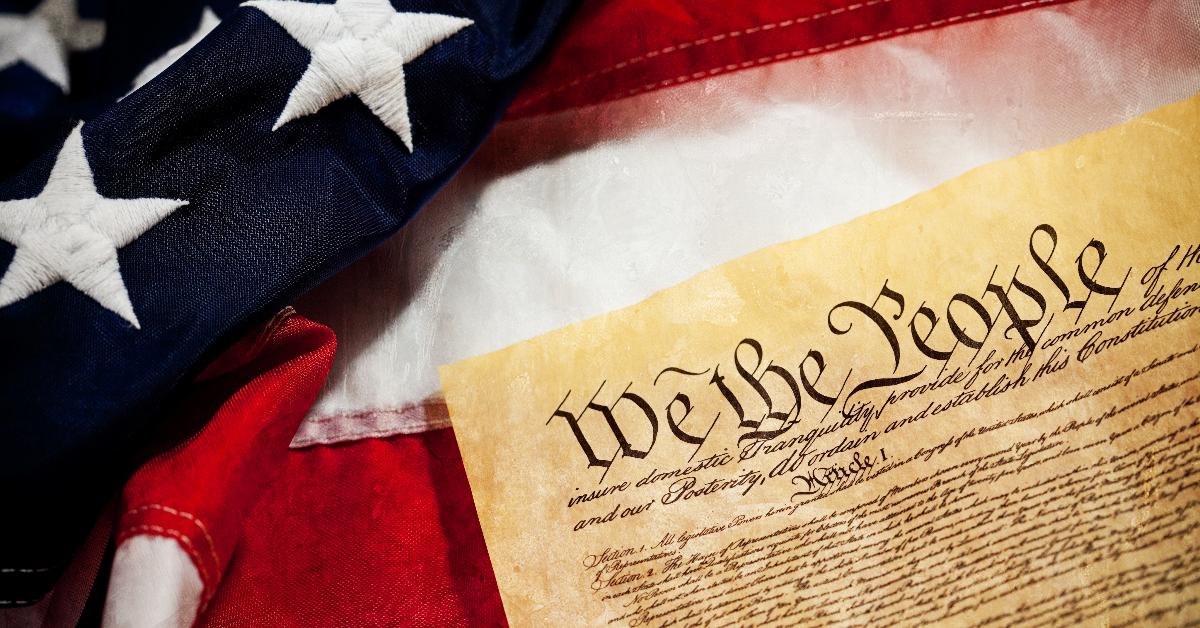
Destroying Liberty Through State Protection: The First Amendment
For a state to continue existing in any meaningful way, it must constantly seek to centralize power. Regardless of the original intentions of a state’s founders or the heritage that a state claims, if those running the state simply maintain their existing powers rather than growing them, they will find themselves circumvented. Subdivisions and organic local communities nominally under the state will develop independently from the state’s center of power, and the state’s power will, over a period lacking in centralization, be rendered negligible at best. This necessitates that the state centralize in response to any diverging localities to continue existing.
To sustain its centralization, the state relies on narratives and justifications propagated by its apologists. One of the most popular justifications for the increasing scope of power since the early modern era has been the safeguarding of rights and liberties of the people subjected to the state. Contrary to the promise, the safeguarding of rights and liberties only serves to expand the power of the state, further centralizing its domains and in time inevitably regulating the rights and liberties, eroding the cause itself. This is demonstrated no clearer than in the history of the United States, specifically in the First Amendment.
Birth of the Constitution and the First Amendment
All throughout the history of the United States, the justification for having a government has rested in upholding American liberty. America’s secession from Britain began with a call for English rights to be restored to the colonies and for natural rights to be infringed no longer by the British government. Only a few years after the war ended, the nationalist Federalists began advocating for a central authority, a federal government, that was nominally meant to protect rights and maintain order across the new country by checking majoritarianism. The Federalists advocated this position in the Federalist Papers and ultimately achieved ascendancy.
The Federalists would establish a federal government, but in this process, the Federalists made concessions to their opposition, the Antifederalists, by promising a series of amendments that would become the Bill of Rights. While the Antifederalists ultimately lost again in this round of politicking, a series of restrictions were placed on the federal government to protect rights and guarantee local autonomy. The First Amendment was born here.
The Original Purpose
As one can see by reading the First Amendment, only the federal government, Congress specifically, was restricted in its authority. Given its origins as a compromise between restructuring or strengthening the federal government, the limited application makes sense. During this time, some states and localities were establishmentarian, while others had declared religious tolerance. Prohibiting Congress from creating a national church was an act to not only prevent the dominance of one sect over the country, binding the Anglican South and the Congregationalist North together, but it also preserved political decentralization. The role of the Bill of Rights as a restriction upon the federal government was clarified further in Barron v. Baltimore. The decision, one of few decentralizing rulings of the Marshall Court, was unanimous in declaring that the Bill of Rights applied only to the federal government.
The Loss of State Autonomy
After the American Civil War, the victorious federal government and its ruling Republican factions sought to rework the legal structure of the country. With the Thirteenth Amendment having abolished slavery in the country (except for governmental use), effectively invalidating the three-fifths clause that had limited the representatives apportioned to the South, the future of Republican dominance over the country looked uncertain. Freed slaves in the South could still be legally barred from voting, limiting Republican influence in the South while strengthening Democratic influence. This led to the imposition of the first Civil Rights Acts (themselves showing how government protection of rights leads to ever more centralization). This abated some Northern fears, but not all.
A few months later, the Republicans set out to codify their reforms into something more permanent by amending the Constitution. On June 16, 1866, the future Fourteenth Amendment was transmitted to each of the state governors for ratification. Upon every ex-Confederate state except Tennessee rejecting the amendment, the radical Republicans passed the Reconstruction Acts. Reconstruction subjected ex-Confederate states to military government until, among other requirements, the individual state ratified the Fourteenth Amendment. By the next year, 1868, the Fourteenth Amendment would be law, paving the way for the First Amendment’s incorporation.
Incorporation and Its Consequences
Incorporation, as defined by Stephan Kinsella, is the process by which the Supreme Court deems elements of the first eight amendments necessary for due process, incorporating them into the due process clause of the Fourteenth Amendment. This allows the federal government to use the Bill of Rights against state governments, centralizing the country around the federal government and homogenizing the country’s laws. Ryan McMaken summarized the subject, saying, “The Incorporation Doctrine, however, has greatly tipped the legal scales in favor of federal power and makes the United States far more of a consolidated state than was ever intended.”
The First Amendment was fully incorporated in 1940 and has since been used to pervert organic social organization while weakening property rights. Marsh v. Alabama held that a company town, a private town where a business owns the houses and infrastructure for its workers, could not prohibit outsiders from distributing religious literature. That is, private property rights were thrown out the window to “defend” the rights of individuals. Saia v. New York held that anyone could operate a sound amplification device on public property, nominally to protect religious liberty. While this falls into the issue of using public property, the details of the case seem to be clear that if the property was private, or if the First Amendment had not been incorporated, the locals would have been much less aggravated during their time in the park.
In the realm of religion and schooling, Illinois ex rel. McCollum v. Board of Education saw the federal government regulate and centralize schooling, declaring that a public school violates the establishment clause by allowing religious education during school hours for students or parents who voluntarily participate. On the state level, Tudor v. Board of Education of Borough of Rutherford (N.J.) ruled that, because of the incorporation of the First Amendment, New Jersey’s constitution could not allow the Gideons, a private organization, to distribute King James New Testaments to children in schools, even if the school provided consent forms to the students and parents. This decision would be mimicked across the country. How religious liberty is protected by preventing children and parents from having the choice to accept literature, I do not know. Engel v. Vitale declared that voluntary participation in a school-sponsored prayer violates religious liberty by violating the establishment clause. Abington School District v. Schempp prevented schools from reading Scripture without comment and prohibited the Lord’s Prayer from being used by public schools, mandating that religion can be discussed by the school only objectively and secularly.
There are hundreds of other examples, but this list demonstrates the general pattern. The federal government, under the banner of protecting rights and liberties, centralizes its power by establishing itself as the arbiter of rights. Privately owned communities, like the company-owned town, lose their property rights. Public schools, since the 1960s, must provide an “objective” and “neutral” treatment of religion in all aspects, regardless of the wishes of the locality. This mandate becomes ever more insidious when considering that homeschooling was still illegal in some states until the 1990s. The distribution of religious texts by private organizations was also prohibited in the supposedly public area of public schools, though other public areas (and some private) must endure proselytization that locals find to be irritating. Moreover, by making itself the arbiter, the federal government is now the definer of rights. The definition that it has chosen for freedom of speech has directly contradicted the property rights approach to the subject, and because of the ubiquity of the state, viewing civil rights through property rights is almost unknown.
Don’t Fall for It
The above-described butchering of rights in the name of their protection applies far beyond the American First Amendment, but it captures the story perfectly. Throughout time, leaders of the United States have laid the groundwork for or directly tyrannized the country, despite claiming the opposite. Localism and decentralization have been mutilated, as the entire country has been made to conform to frankly arbitrary decisions that fly in the face of real property rights and organic social organization. The state either explicitly or implicitly understands that this trend grants it more power, letting it live to tyrannize another day.
If liberty is to be restored to the people of this country, we must disincorporate the Bill of Rights or render its incorporation irrelevant. Even better, if liberty is to be restored to the people of this country, the state must be dismantled, and to do that, we must never again fall for the false promise of having a state “defend” our rights.



